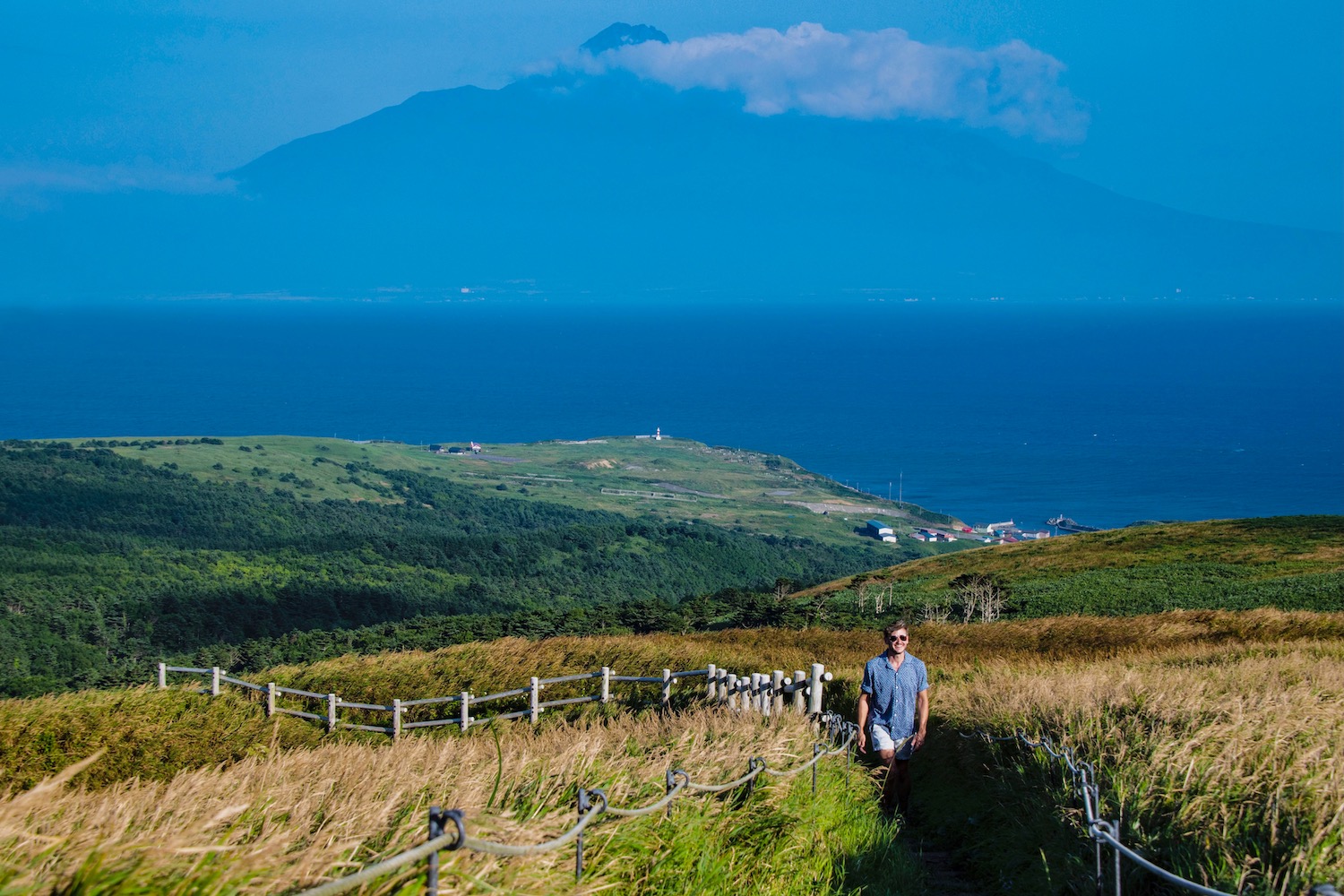“You’re in F,” the gate agent laughed, after she checked my boarding pass while verifying the new boarding time of my flight to Tokyo. “You don’t need to wait in that chaos.”
Instead, she escorted me behind a rope to a row of just eight seats—one for each of the suites in the first class cabin of ANA’s refurbished 777-300ER aircraft that would soon be departing to Haneda.
Only about half of the seats were fully, however. Diamond members, I overheard her saying to another passenger in Japanese, would need to stand.
This feeling of being cocooned continued once I was onboard a short while later, in no small part because I had assigned myself seat 1K, literally the place on the plane furthest away from the chaos of the outside world.
The flight attendant taking care of me, surnamed Shibuya, seemed intent on ensuring nothing would pierce my chrysalis.
The next 13 hours seemed to pass—mercifully—according to a slower clock than the one that ticks in the world outside the pointy end of the plane.
In spite of this, we made our final approach over Tokyo Bay faster than I wish we had; as we did I drank a black, unsweetened iced coffee, which seemed almost quaint compared to the Krug and caviar in which I’d shamelessly indulged during our Aleutian crossing.
“When will you visit Rishiri and Rebun?” Shibuya-san asked me just after we landed, referring to travel plans I’d told her about during the flight.
I laughed, remembering that I still had an entire trip to Thailand to complete before I’d even officially be setting foot on Japanese soil.
“Not for more than a week,” I said, briefly explaining the strategy of my rainy season trek through that country’s northeastern Isaan region.
With that, I bid Shibuya and her colleagues farewell, and stepped off the plane, oblivious as to what might await me when I got back to Japan—happily so.
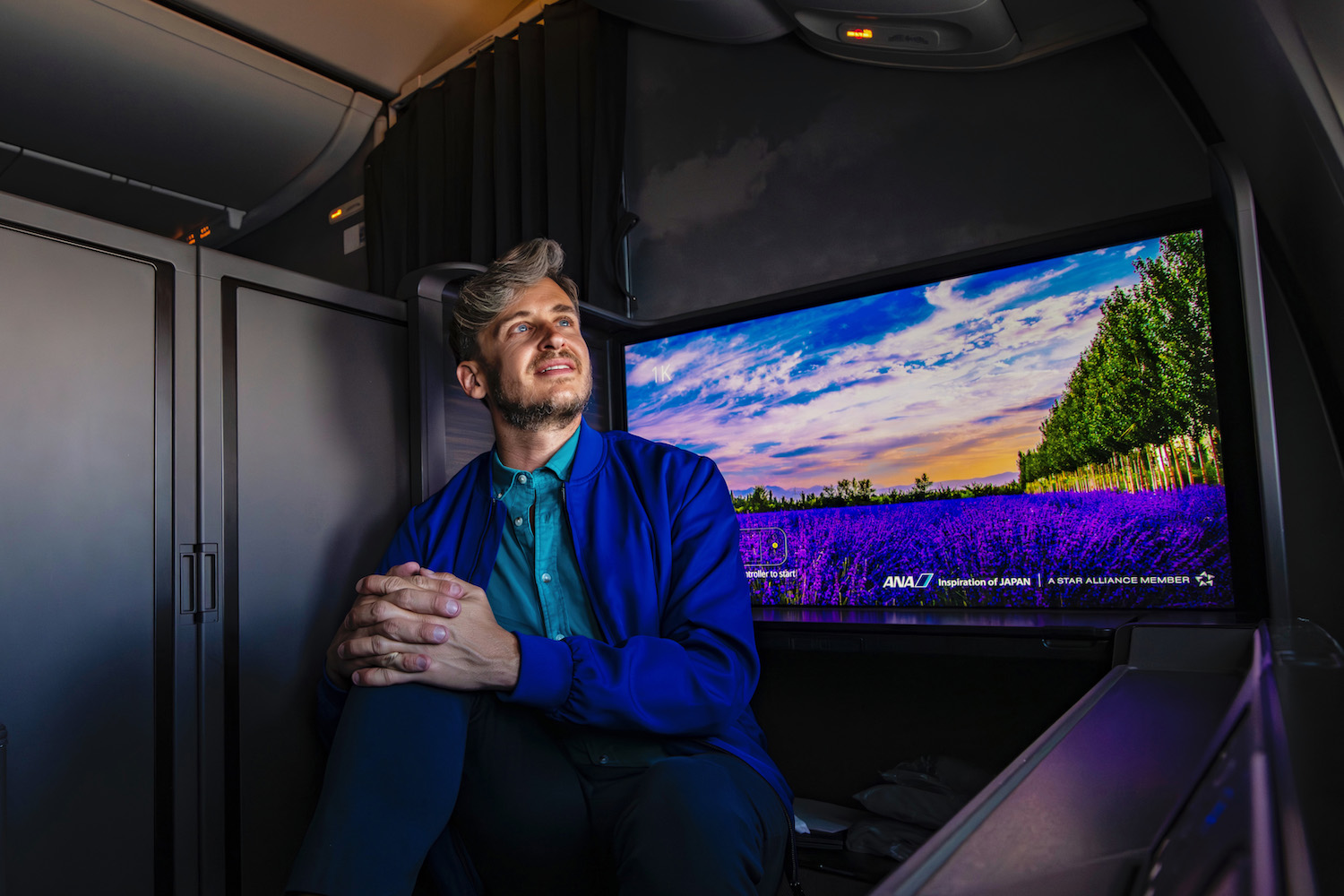
I’m not sure why I noticed the injured swallowtail flapping around on the so-called White Shell Road, a strange path made of—what else?—white shells that winds through the hills above Cape Soya, the northernmost point in Japan.
Certainly, there were plenty of other distractions: Although virtually unknown to foreigners, this place seems very popular among Japanese tourists (and, for some reason among ones riding motorcycles especially).
There was a period in my life where a butterfly dying near me always tended to be a bad omen—a soon-to-be-lost job; a traffic incident—which made sense: Butterflies were my childhood obsession. Why wouldn’t harm to them translate into harm to me?
This poor specimen, of course, was well on his way to the afterlife before I arrived on the scene; he may well have been dead already, in spite of his wings flapping to and fro. Still, I did my part—I moved him off the road, so that he wouldn’t get more damaged—although during the process, part of his stained-glass wing broke off.
I considered keeping it as a souvenir, but instead just admired the way it contrasted with the bed of crushed shells beneath it.
As I drove toward the cape itself, I wondered which of my precarities might reach a fever pitch in the wake of the episode. Just then, a small fox darted across my path, passing between forests of kuma-no-take so quickly I might not have noticed it, had I not just been so fixated on my lepidopteran friend.
The weather was my main worry. Though I never expect sunshine in Hokkaido (especially not in the summer), conditions were especially bleak today.
Practically speaking, I wondered whether visibility might disrupt my journey back to Sapporo and then to Tokyo three days later. The lone daily departure from Rishiri Island (where I’d begin my journey) had been canceled approximately 20 percent of the time in recent days.
On the plus side, the grey and wet scene that seemed to await me down by the water inspired me to stop at a flamboyant restaurant shaped like a windmill, which served not Dutch food (thank god), but buttered hotate (scallops) and kani (crab claws) which—thank god—were pre-cracked so that I could easily reach their meat.
Had I not seen a family of deer (who were much more beautiful than American deer) gathered just up the hill from the actual Soyamisaki monument, the site would’ve seemed entirely underwhelming.
By contrast, the scene that awaited me driving into central Wakkanai brightened my mood—and not just because I could see the sky clearing on the horizon.
For starters, the city was much larger—much, much larger—than I expected, to the extent that I wondered whether I hadn’t made a mistake spending only a single night here.
Outside its compact quasi-urban center, colorful houses (like the sort you might find in, say, Greenland) dotted the coastline, seemingly for miles on either side of town, splaying one way and the other like the arms of a galaxy.
So too were reminders of our proximity to Russia (which, due to current events, were as chilling as they were irrelevant) everywhere, namely the presence of Cyrillic text on most important street signs.
After a brief (and disappointing) trip up the Centennial Tower, whose windows were too fogged and filthy for me to see much of anything, I headed up to the “other” cape (Noshappu), where steadily improving conditions had made it seem like days or even weeks (and not just two hours) had passed since my time at Cape Soya.
Driving down the west coast of the misaki, Rishiri island itself emerged from behind a blanket of clouds that had completely obscure its existence prior to then.
I spent the rest of the daylight hours trying to find the perfect spot to admire it. Eventually, I settled on a third cape (one so tiny you can hardly even use that word to describe it) just north of the airport, which I had actually first noticed when my flight from Haneda was landing.
The island almost gave off a Mt. Fuji quality rising above an especially cluttered portion of the Wakkanai townscape, at least through the highly-compressed window of my 300mm zoom lens.
Here again, my decision only to spend a single night in Wakkanai came back to bite me: I would need to return my rental car at 7 PM, which would preclude me from watching sunset’s most vibrant colors enhance the scene.
(My decision, or maybe one of the dozen of horseflies that invaded my car during the two seconds it took me to get back inside it. It’s hard to know.)

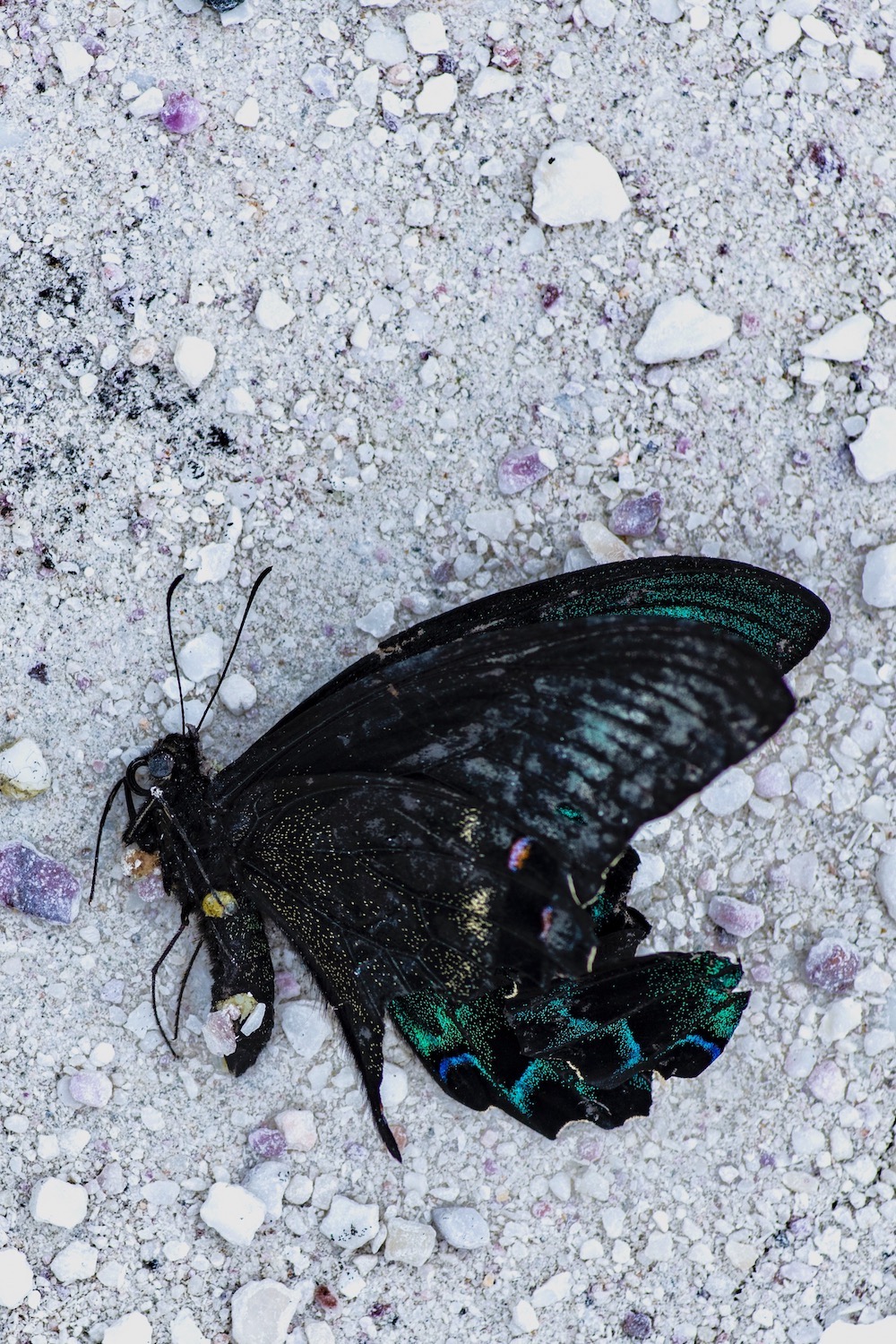
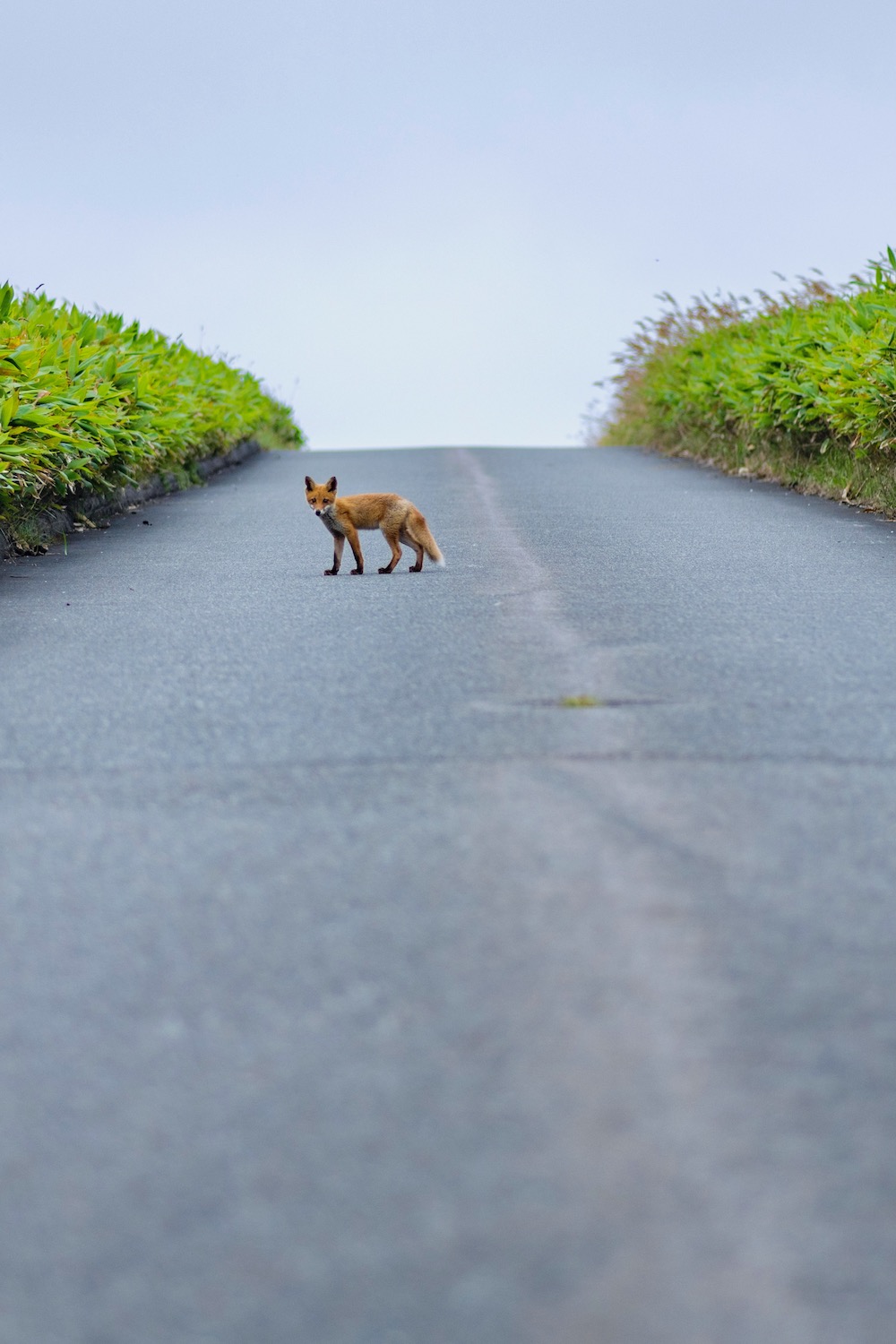
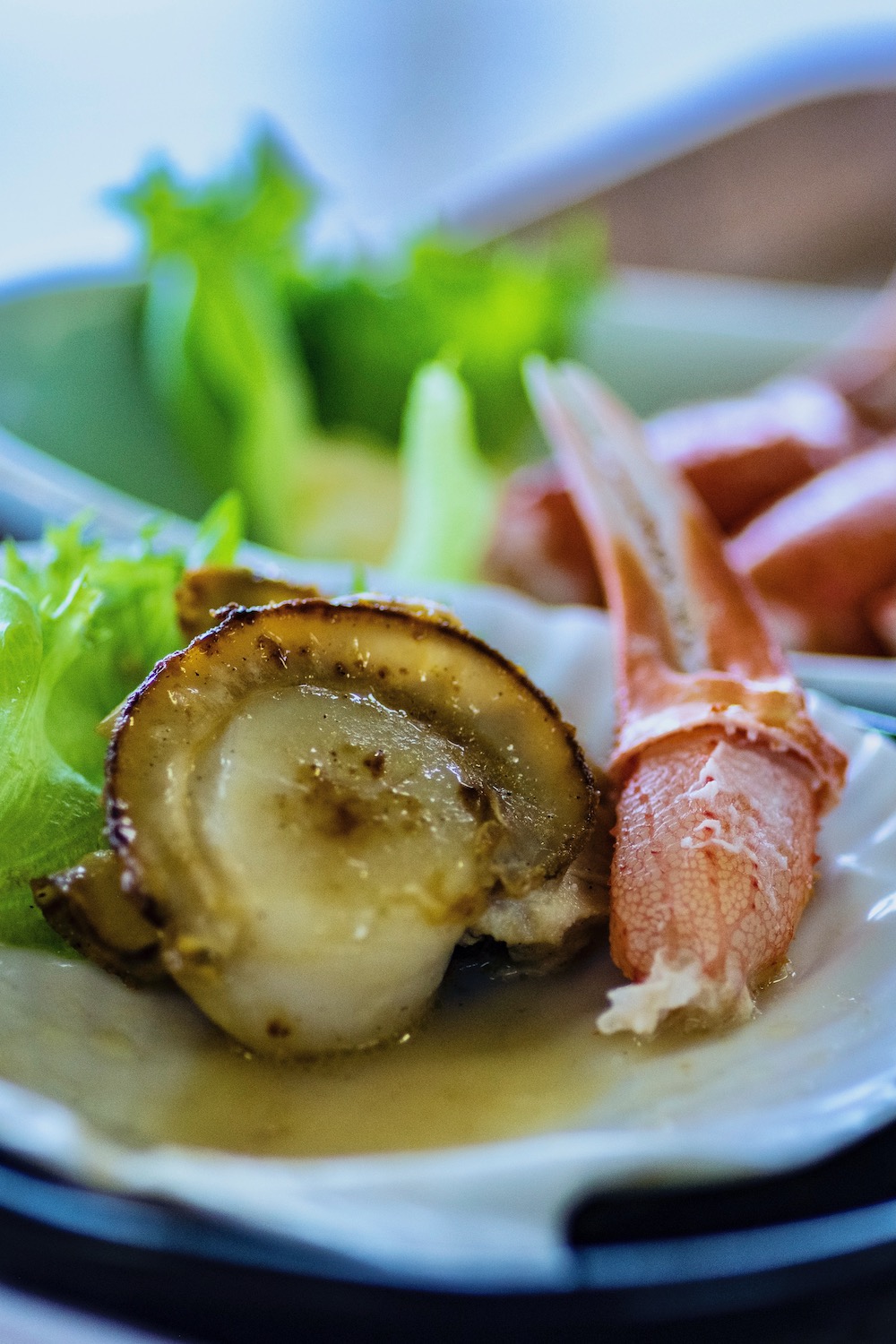
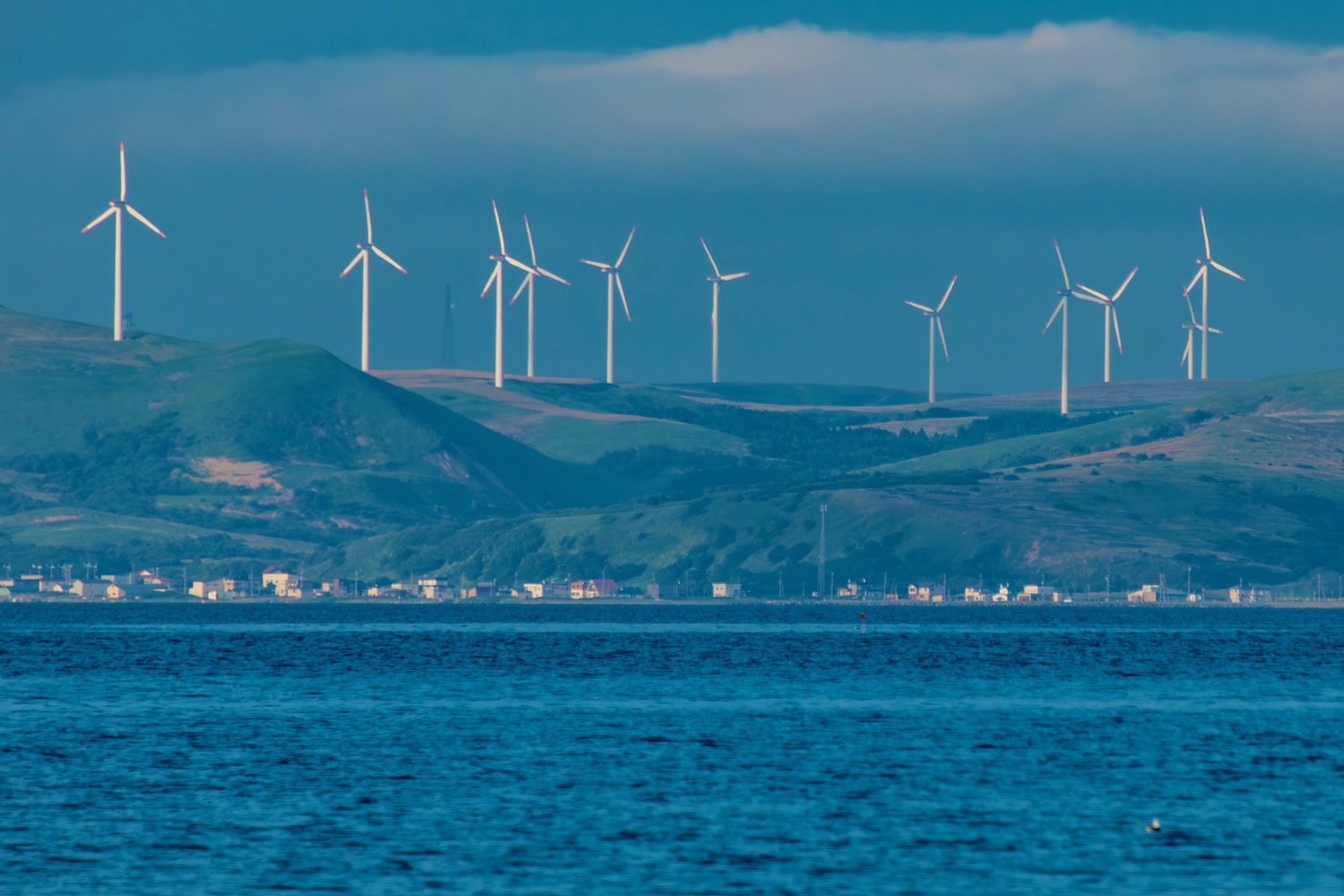
If you were alive around the end of July 2025 when I wrote this piece, you might’ve heard about a strange extraterrestrial object, which some experts speculate could be an alien spacecraft.
My hope is that these experts are wrong (as experts these days are wont to be); apologies in advance if you’re reading this after having been abducted and confined.
A story about this object (which is apparently nearing its perihelion, or the closest it will get to the sun before shooting—hopefully—back out into space) was the top piece of news on my phone as I made my way toward Wakkanai’s ferry terminal for my boat to Rebun.
Walking toward my embarkation point, of course, a more earthly disruption was top of mind: The former international departure port, which once offered crossings to Sakhalin, Russia, was fenced off, with barbed wire atop the chain links for added drama.
I worked during the crossing to Rebun; because weather conditions (terrible ones) were similar when I arrived, it almost felt like I had passed through a wormhole, rather than sat on a slow boat for more than two hours.
I went immediately to Toyota Rent-a-car; I was pleased to learn that the reservation I made by phone (this shop doesn’t accept online bookings) had been successful, and successfully understood at that.
Indeed, within moments, the older woman had not only competed the rental transaction, but had used a simple map of the island to explain to me in less than 100 words everything I needed to know about navigating it.
I would take the first two lefts to reach Cape Sky; once there, I would turn around, but turn left again instead of right en route to Cape Sukoton: The roads leading to it were mostly one-way.
“Question,” she pronounced the word halfway between katakana and English, and wrote a question mark above the place where you can apparently watch seals sunbathing. She then directly me past the port town of Kafuka to the island’s southern reaches, of which she seemed oddly dismissive.
This was fine, of course—I hadn’t expected any sort of education—but in point of fact, this was the part of Rebun (the part where, ideally, you can see a view of neighboring Rishiri in the not-so-far distance) that I was most excited about.
Well, as excited as I could be: The weather, as I mentioned, was horrible; you could so much as tell that Rishiri-fuji towered above the sea only a few miles away as the crow flies.
As a result, I purposely avoided the island’s coastlines, instead heading for a so-called Alpine Garden where I hoped to be able to spot atsumori, a type of lady’s slipper orchid that is apparently only found here.
Seems they meant “here” quite literally: The only example of it sits potted within the garden’s office. I did not see a single wild plant in the outdoor portion of the garden, which if I’m perfectly frank was sparse and disappointing.
In the safety of the shelter as I continued waiting for conditions to improve, I studied the specimen. I thought about the paradox of security versus liberty, a thought experiment that fell apart the moment the possibility of an alien invasion entered the conversation.
But then, I couldn’t get distracted: Shards of cerulean had just begun to peak through the clouds. Initially, I did follow the rental car agent’s suggestions, driving quickly to Capes Sky and Sukuton for perfunctory visits, and settling the question of the seals: They were not out.
I could hardly contain my excitement for the prospect of what I might see hiking up to the Momodai viewpoint. Unfortunately, as I drove toward the trailhead near Shiretoko Inai Shrine along the southern coast of the island, Rishiri remained almost completely obscured behind clouds.
Worse, as I ascended up the mountain, whose seas of grasses rose and fell with the whips of the wind like self-resetting dominoes, a layer of haze blocked out the small pieces of Rishiri-fuji that I could see from ground level.
After waiting at the top for around 30 minutes—I had nowhere more important to be; the forecast (to the extent it matters) did call for clearing weather—I decided to call it an afternoon.
I noticed that I had dropped my bag in a bed of clovers, which reminded me of something I used to do when I was a child.
Whenever I was unable to find a four-leaf clover (which was almost always), I would simply tear the largest of the other three leaves, truly believing it would fool my sister or our neighbor friends (who, for their credit, usually humored me).
Now, I didn’t so much as touch a single shamrock this time; I also didn’t really even think about the possibility of getting the shot I wanted.
Still, after driving north and back south down the length of the island again (the seals still weren’t out; the seafood bowl restaurant where I stopped denied me entry for being foreign), the wish I never made had been granted: Rishiri, in all (well, most of) its glory, towering over the sea.
So committed was I to this shot—for my trip becoming what I envisioned it would be in my mind’s eye—that I hiked all the way to the top again, which was a tough slog, both in spite of my willpower and the fact that it was slightly cooler by this point (around 4 PM).
Those facts, and the eeriness of the experience: Excepting a group of young men who walked past me near the entrance, I ended up seeing precisely zero other people on the way up to the summit.
In fact, aside from a crow (which I hoped would defy his reputation as a bad omen) and a couple of butterflies (neither of which died, thankfully), I didn’t see a single other animal.
Rebun Island is free of brown bears and snakes, Google assuaged my anxiety in half a second. Enjoy Rebun’s nature without worry.
(Well, apart from the worry of hostile spacecraft just a few million miles away.)
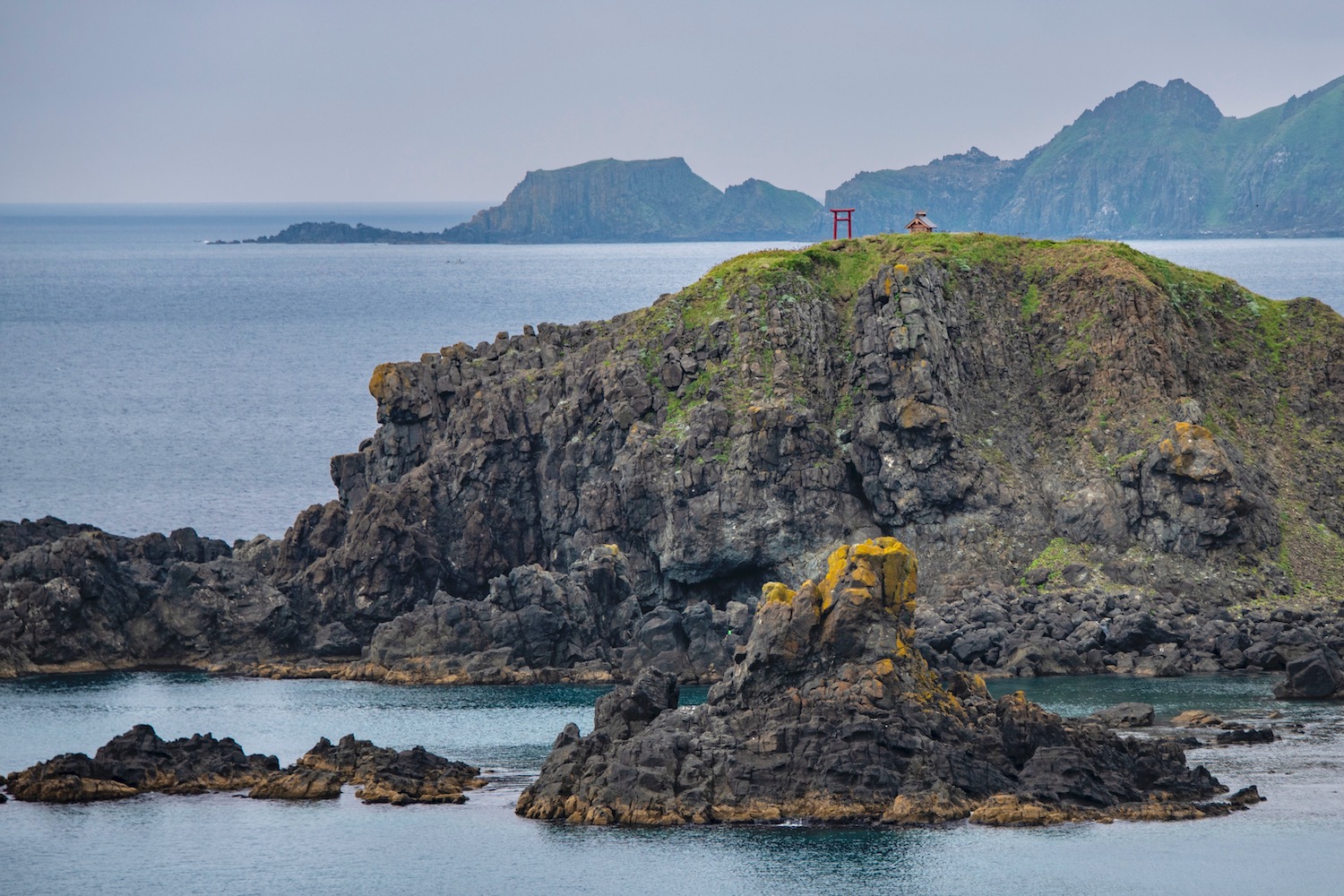
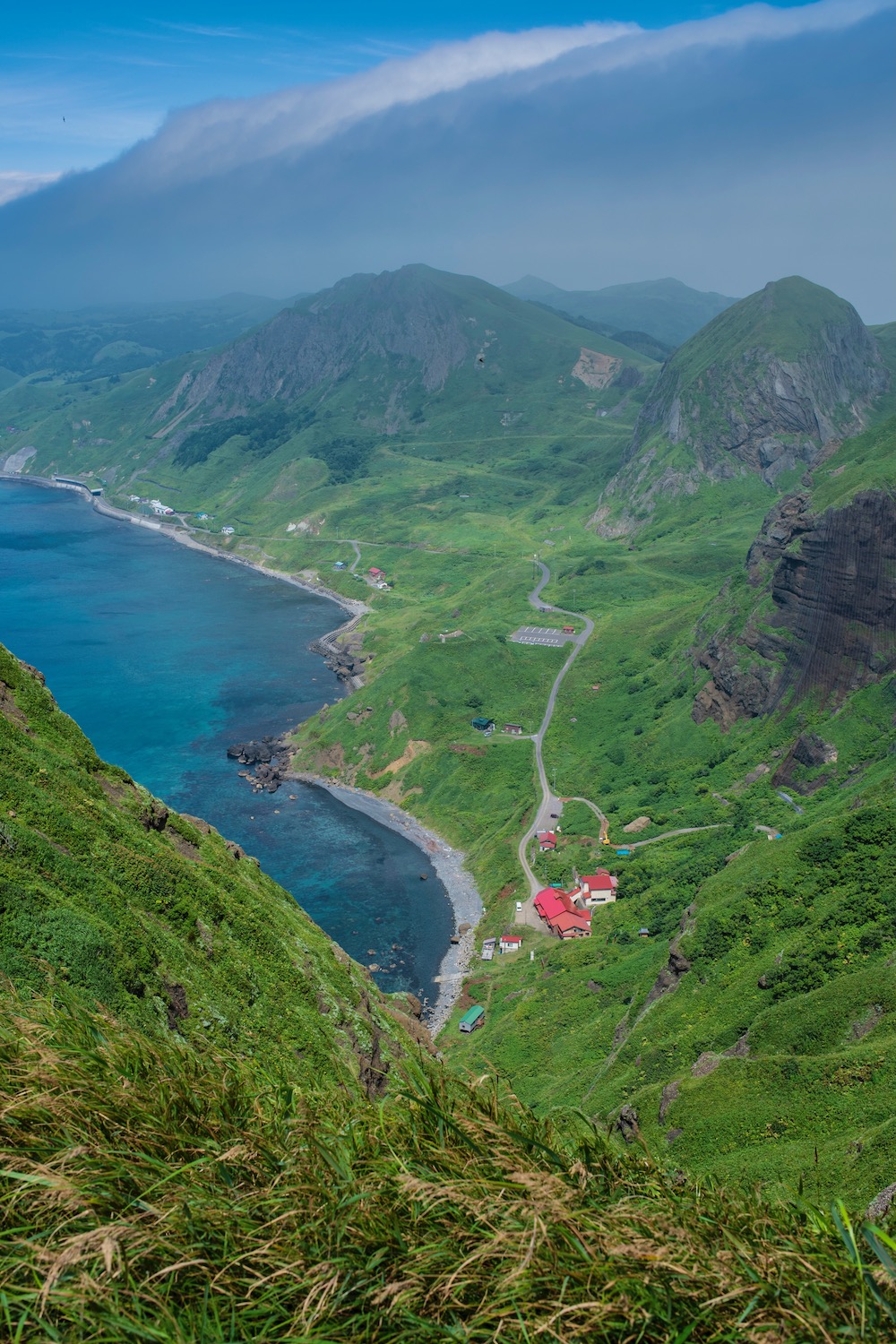
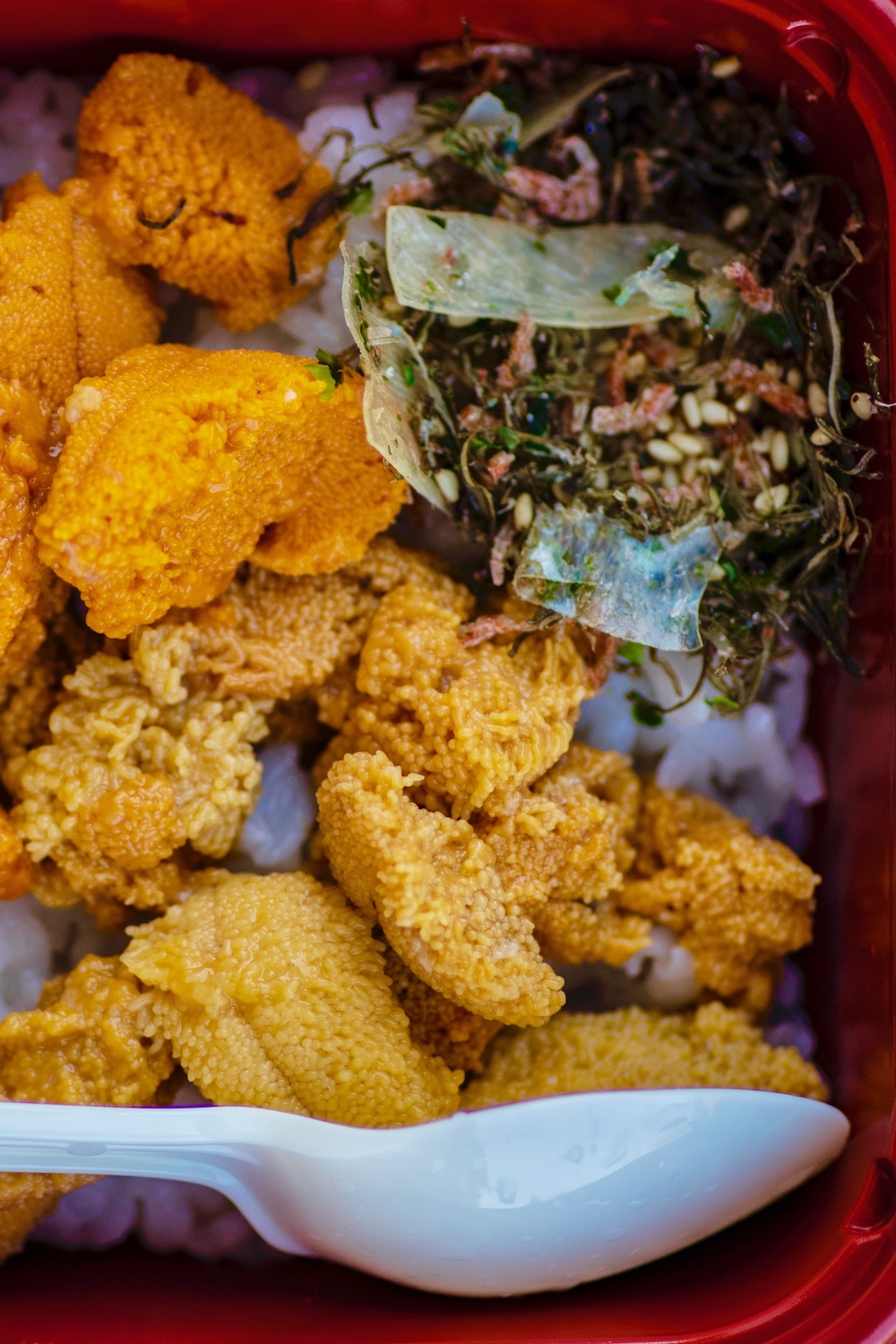
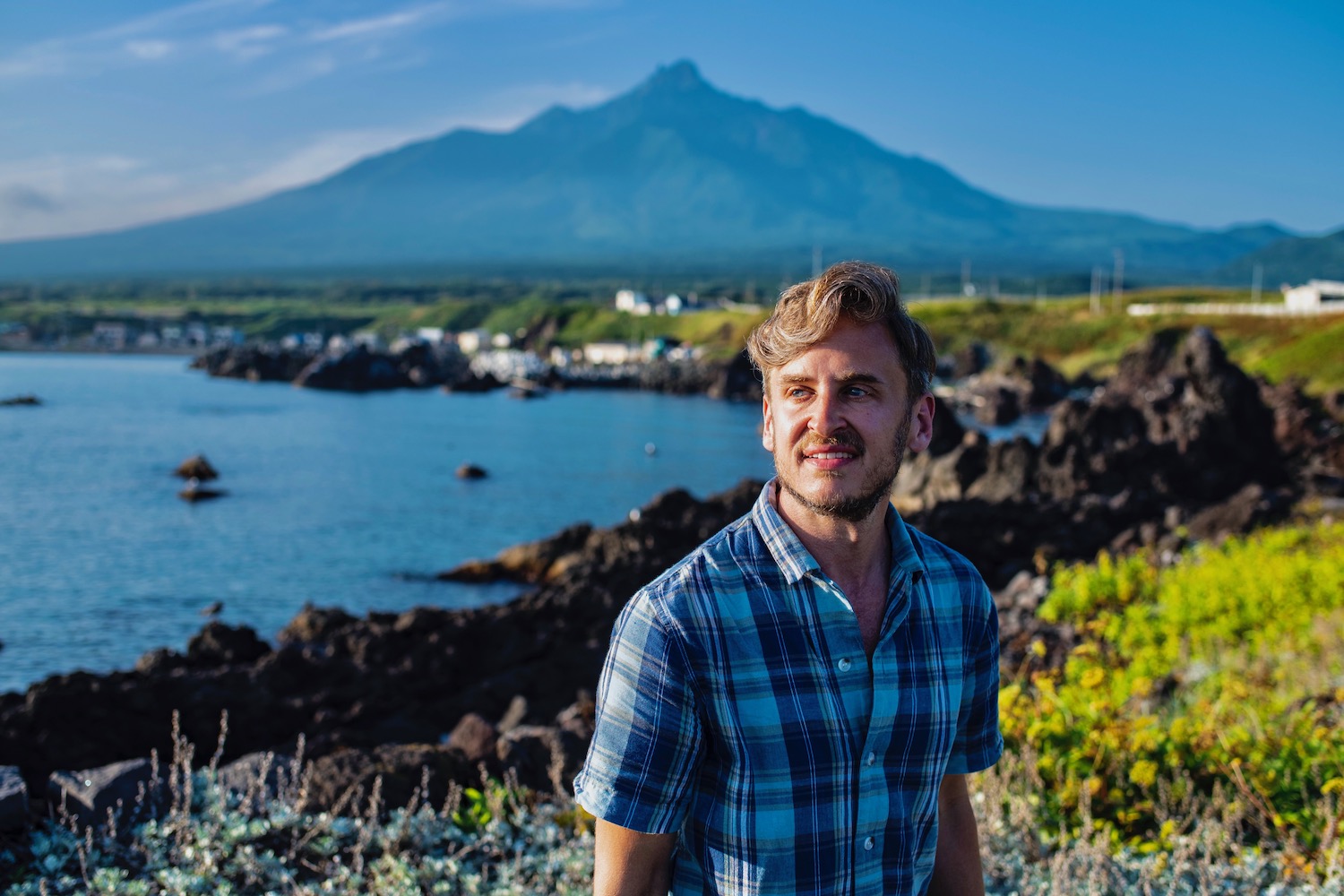
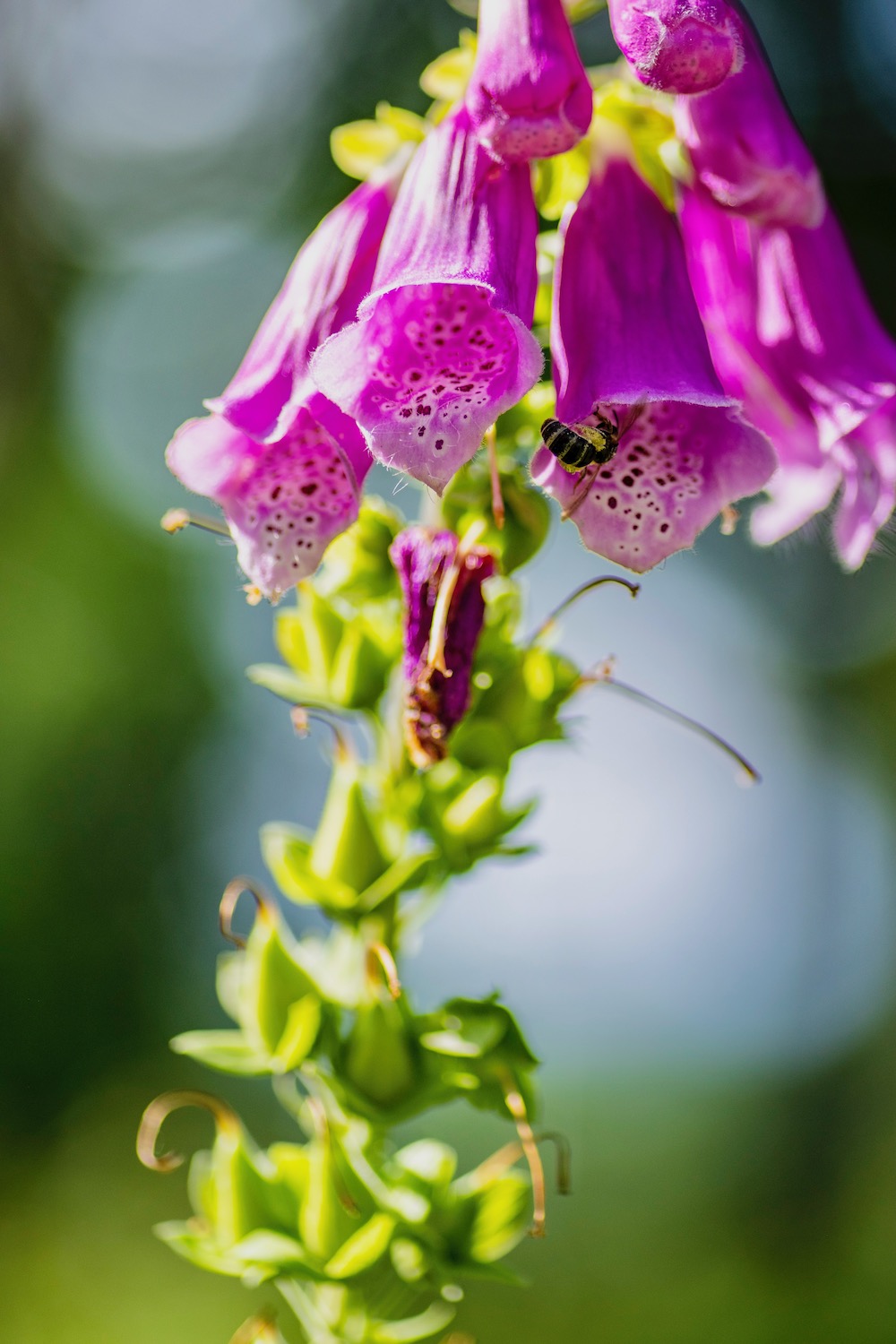
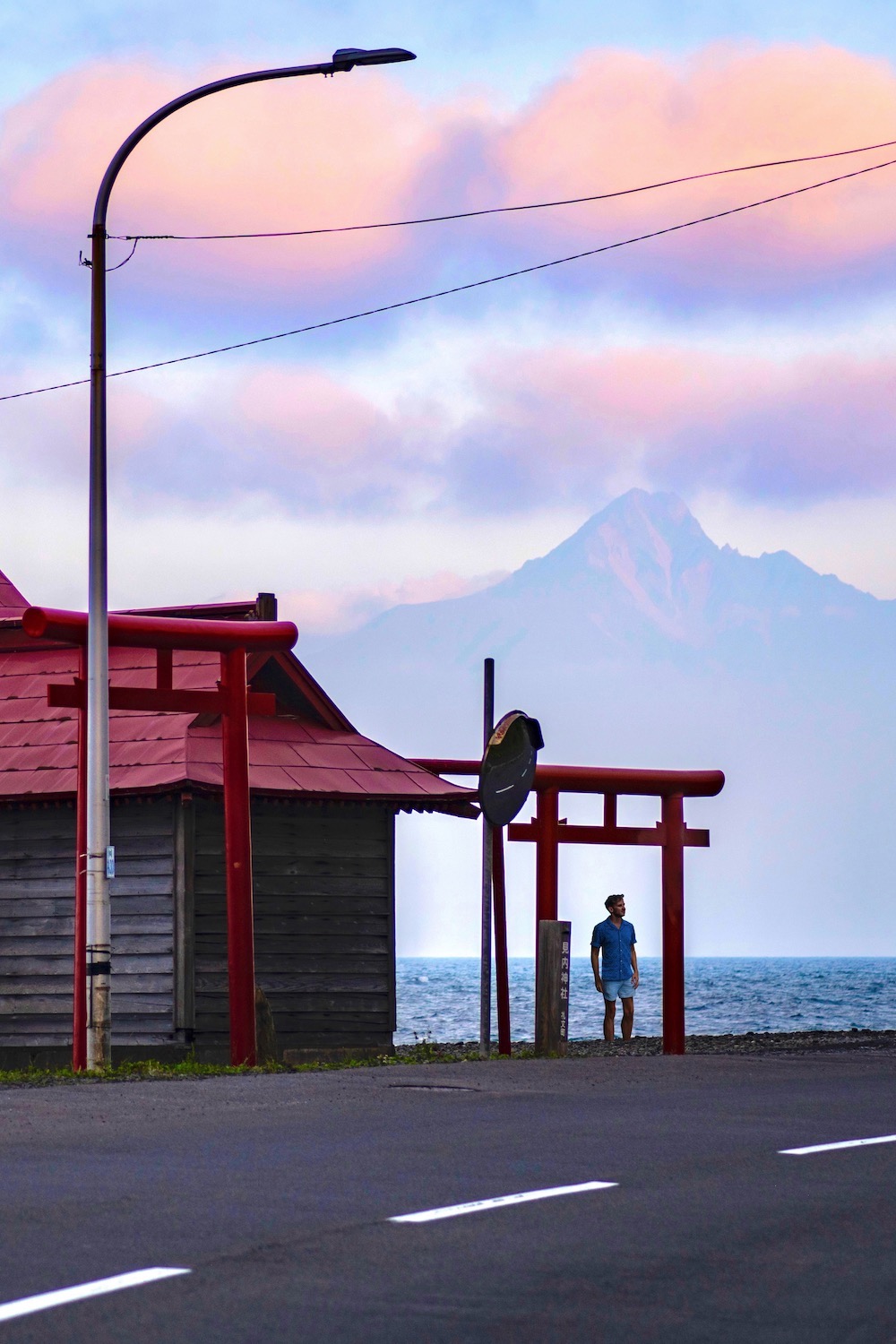
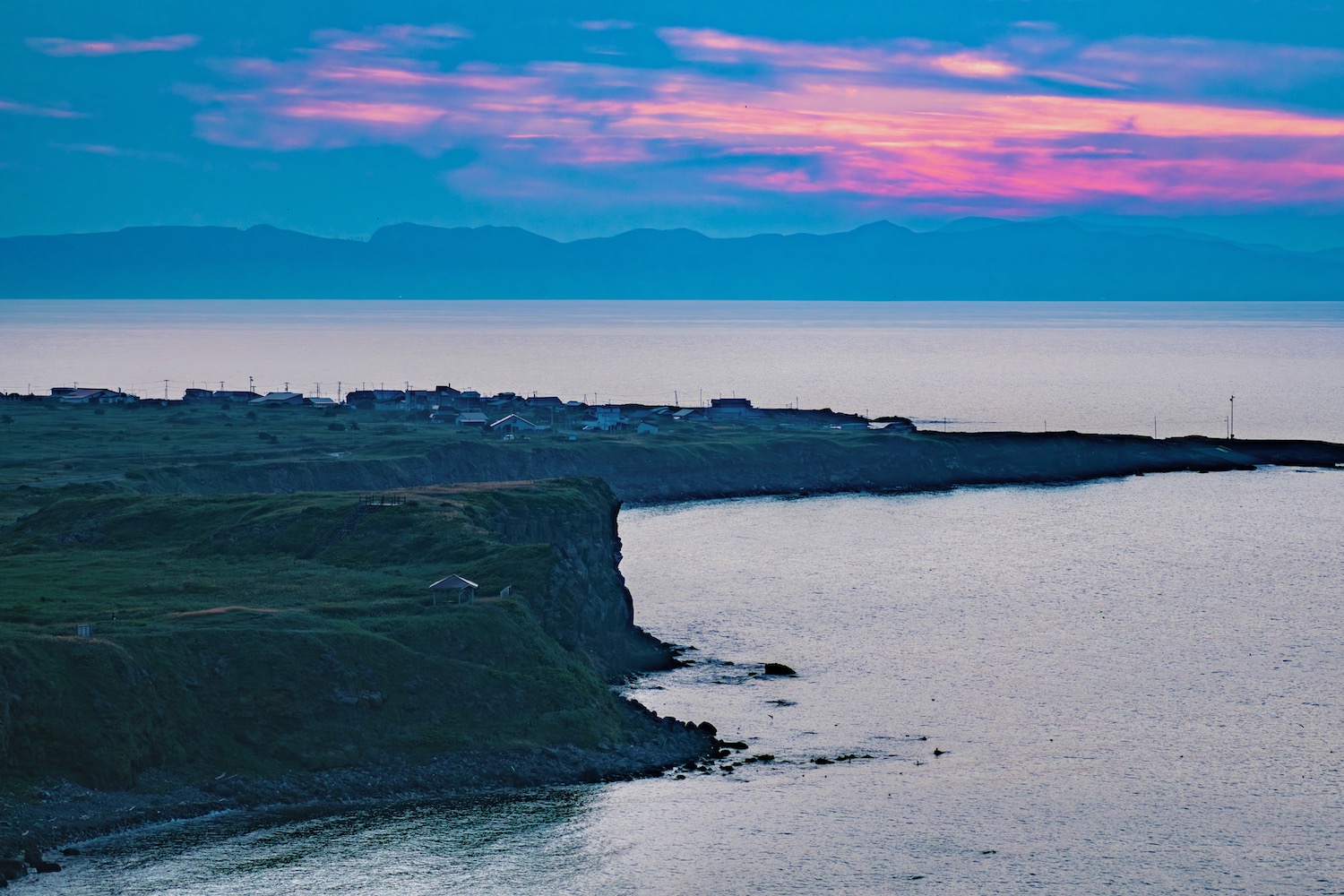
I should’ve awakened the next morning with only excitement about heading over the water to Rishiri in my head. Instead, two situations outside my control commandeered my morning.
The first was that a glitch in the email inboxes for one of my domains altered me to the fact that I hadn’t been receiving messages for at least two days. Needless to say, I had a lot of alarmed clients in my inbox when the messages finally arrived, wondering where I’d gone.
The second? A huge earthquake struck off the coast of Russia’s Kamchatka peninsula. This was far enough away not to cause any concern (for Japan more broadly, and certainly not for me, on the other side of the Tsugaru Strait from the Pacific Ocean), but close enough that virtually everyone I knew texted me to make sure I was OK.
I was of course thankful for this; it also ate up bandwidth I didn’t want to spend. Which is to say that by the time I finally arrived on Rishiri, I needed a decompression session.
Thankfully, I was famished, and since the rental car shop I’d be using was across the street from the ferry terminal, I could simply park it after picking it up and sit down for lunch (which ended up being scallop ramen—they were apparently out of sushi-grade seafood) at the shokudo nearby.
In spite of the fact that this meant I didn’t get on the road until just after noon, I didn’t feel panicked, nor did I feel married to the list I’d assembled.
Unlike on Rebun, it’s possible to completely circumnavigate Rishiri; I opted simply to drive counter-clockwise and see what I found.
The first part of my drive was pleasant but uneventful. The highlight occurred when, after rushing up the steps of Yuhigaoka Observation Deck, where a swallowtail (a living one, thank god) came so close to me so often I thought it might be stalking me.
More importantly, I needed to to wait for the sky to clear—which, after two days in a row of cloudy mornings following by sunny afternoons, I was almost certain would happen.
And it did, at around 2 PM, by which point I was near Cape Senhoshi at what (both at the time, and now in retrospect) was the single-most interesting place I’ve visited on this trip to Japan: A crystalline tide pool, literally overflowing with sea urchins, which the fishmonger nearby had fenced off and turned into a tourist attraction.
At some point that afternoon, the pool’s view of Mt. Rishiri would be amazing, but this wasn’t the moment. Which was fine enough.
“Did you know that uni eat kombu?” Said fishmonger asked me in English, as I sat outside his hut (which was painted urchin-flesh orange) eating an uni bowl prepared with his catch.
I’m not usually a fan of the stuff, if we’re being completely honest. In this instance, however, it was fresh enough (and importantly, the price low enough—less than half of what I’d seen advertised elsewhere) that I decided to take the plunge.
I shook my head. “I guess that’s great for you business,” I remarked, noting how his shop was stocked primarily not with sea urchins, but with various forms of the kelp they feast.
I sat there for a moment reveling not only in the surprisingly delicious taste of the donburi, but a revelation that occurs around this point in every journey I take: Each trip only feels like it’s truly beginning when the end is near.
Later that afternoon, after driving to my hotel to drop my bags, I decided to go back to Senhosimisaki to test my hypothesis about the mountain; it ended up being true.
I then drove three quarters of the way back clockwise around the island to Yuhigaoka-tenbodai, which I had speculated earlier in the morning might be a good sunset spot—I was once again correct, even if the swallowtails were in for the night (and hopefully not dead)
As the vermillion sphere teased me—after disappearing behind thick clouds it emerged, in full, for just seconds before sinking into the horizon—I thought about the paradox inherent in interstellar space travel: Namely, that if the universe is indeed expanding at the speed of light, we may never be able to traverse galaxies.
This brought me comfort for a moment, and not just in the context of Oumuamua. Though, of course, the specter of death by hostile aliens never fully vanishes from my mind—I did grow up in the 90s, after all.

First-class flight experiences ended up bookending this trip, and although that had always been my wish, I didn’t think it would end up coming to fruition.
Indeed, while finally being able to book a seat in the most exclusive cabin of Japan Airlines’ new A350 had been the impetus of my decision to visit Japan in July—frankly, not my favorite month in the country—availability on ANA had come open only days before my departure.
As the flight pushed back, the flight attendant poured my third glass of Salon champagne into a plastic cup that complied with safety regulations.
“Don’t worry,” she reassured me in Japanese. “I’ll bring you another real glass once we’ve taken off.”
Outside the aircraft, a patch of blue sky had torn open. This was surprising, given that a typhoon was bearing down on Hachijojima island, just to our south.
And yet it was somehow appropriate, as I bid farewell to a strange trip that took me to corners of Japan that were far-flung even for me. A trip during which the threat of tsunami and alien invasions seemed to loom constantly, yet whose every day ended sunny, in spite of how gloomy each morning began.
I couldn’t help but think back to the poor, dying swallowtail I’d moved off the main road in Wakkanai—who, to knowledge, was the only one of the many I’d encountered during my time near Hokkaido’s northern tip that had not been fluttering around, oblivious to the bad in the world.
I wondered how he had finally met his end, and whether my kindness had made any difference in the grand scheme of things.
As Tokyo disappeared beneath the typhoon’s outer bands, I knew the reality I had come to know was falling away forever, like it does when every trip ends.
It was a sort of death, yes—but it was a beautiful one.



